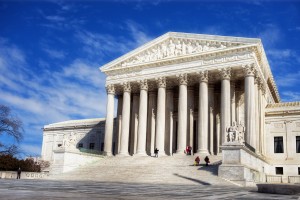 The U.S. Supreme Court last month issued an injunction blocking the EPA from implementing its Clean Power Plan, which would end America’s use of coal, its cheapest and most abundant source of electricity. I’ve written about it twice, because Western Colorado’s economy is so dependent on coal. It employs over 2,000 people and generates $58 million in federal and state royalties, $28 million in private landowner royalties, $4.5 million in reclamation funds, and pays $28 million in property, severance, and sales taxes – all of it on the Western Slope.
The U.S. Supreme Court last month issued an injunction blocking the EPA from implementing its Clean Power Plan, which would end America’s use of coal, its cheapest and most abundant source of electricity. I’ve written about it twice, because Western Colorado’s economy is so dependent on coal. It employs over 2,000 people and generates $58 million in federal and state royalties, $28 million in private landowner royalties, $4.5 million in reclamation funds, and pays $28 million in property, severance, and sales taxes – all of it on the Western Slope.
EPA has never tried anything so unpopular in its 45-year history, and that is saying a lot. But this proposal seeks to totally transform America’s energy industry in ways Congress never authorized, and that would cost American families hundreds in higher utility bills.
The Clean Air Act, which gives EPA authority over air pollution, empowers the agency to regulate emissions through performance standards applied to individual power plants – not to regulate the gross emissions of an entire industry, or force all production to shift to other fuel sources. Yet that is precisely what the Clean Power Plan tries to do, expanding EPA’s authority to regulate not only existing power plants, but also the companies that own them, and the entire electric grid. It would require owners to shut down or curtail existing coal plants and build or purchase replacement power from natural gas or renewables. That would give EPA power to regulate a significant portion of the American economy – which Congress never authorized.
One reason this court case is so interesting is its magnitude – EPA was sued by more than half of all the States, dozens of utilities, business groups, legal institutes, think tanks, unions, and local governments. Even more fascinating are the legal precedents involved. The Supreme Court has never before blocked a regulation before it was reviewed in the lower courts. But now, EPA’s unprecedented assertion of new authority is already causing a restructuring of the nation’s energy supply that cannot be undone. So the Court exercised its extraordinary authority to prevent imminent harms posed by the regulation.
One of the legal briefs explained that, while the emission reduction mandates do not take effect until 2022, it takes utilities years to plan, develop, site, and construct the billions of dollars of new facilities and infrastructure required. So the rule is forcing immediate investment of billions in infrastructure that is unneeded, but now mandated. It has also sharply curtailed investments in improving existing coal-fired plants, and caused many to be closed – along with the mines that supply them. Some of the nation’s largest coal companies have declared bankruptcy, and EPA itself predicts that most coal plants will ultimately close because of the rules.
In a nutshell, the rules impose emission reductions that existing plants cannot meet, forcing the utilities to construct new wind, solar, and natural gas facilities, in order to reduce total emissions across the entire energy sector – rather than at specific plants that needed improvement. That is new. That means trying to reduce emissions through restructuring an entire industry, rather than limiting emissions at specific sources. That is not part of the Clean Air Act.
So the Supreme Court issued a stay halting enforcement of the plan, until arguments can be heard by the circuit court (scheduled for June) – and even then, the rule remains blocked pending eventual appeal to the Supreme Court. So in due course, the State’s arguments will be heard, asserting that only Congress has such broad authority as the Clean Power Plan.
The timing was central to the high court’s decision to step in now, because EPA is playing an all-too-common waiting game. You see, because such litigation takes so long, EPA is betting it will get what it wants, forcing all electric generation away from coal, through irreversible investments while the case is pending – even if its plan is ultimately struck down. The Supreme Court is sensitive about that because it has seen this behavior before. When the Court rejected EPA’s justification for an improperly issued mercury regulation last year, Agency Administrator Gina McCarthy bragged that because of how long the case took “the majority of power plants are already in compliance or well on their way,” regardless of the Court’s ruling.
Courts don’t like being mocked, so this time delay may work against the EPA. There is now a good chance the rule can’t be completed until after Gina McCarthy and her boss are no longer in office.
(A version of this column originally appeared in the Grand Junction Daily Sentinel February 12, 2016)




Comments on this entry are closed.